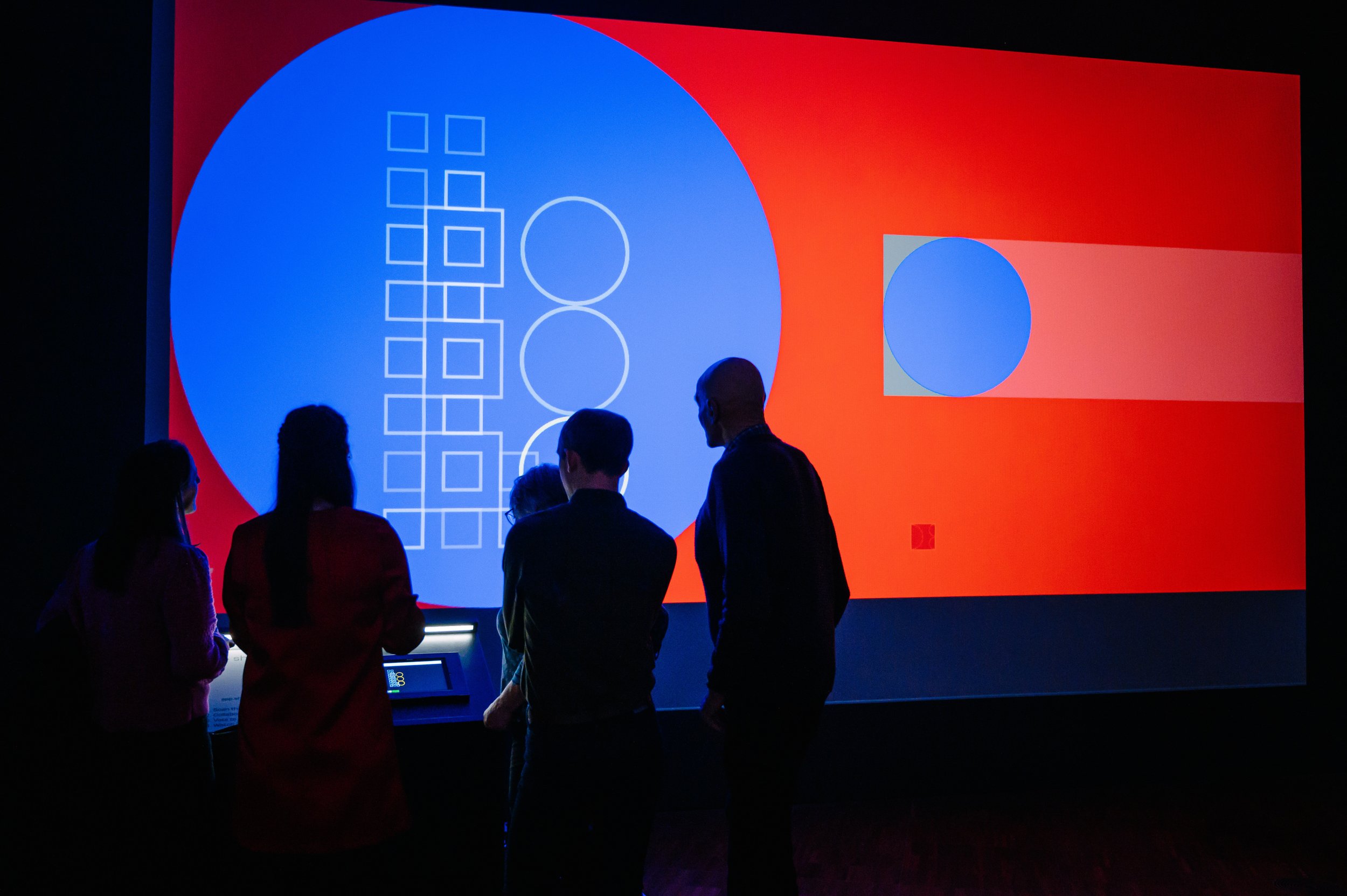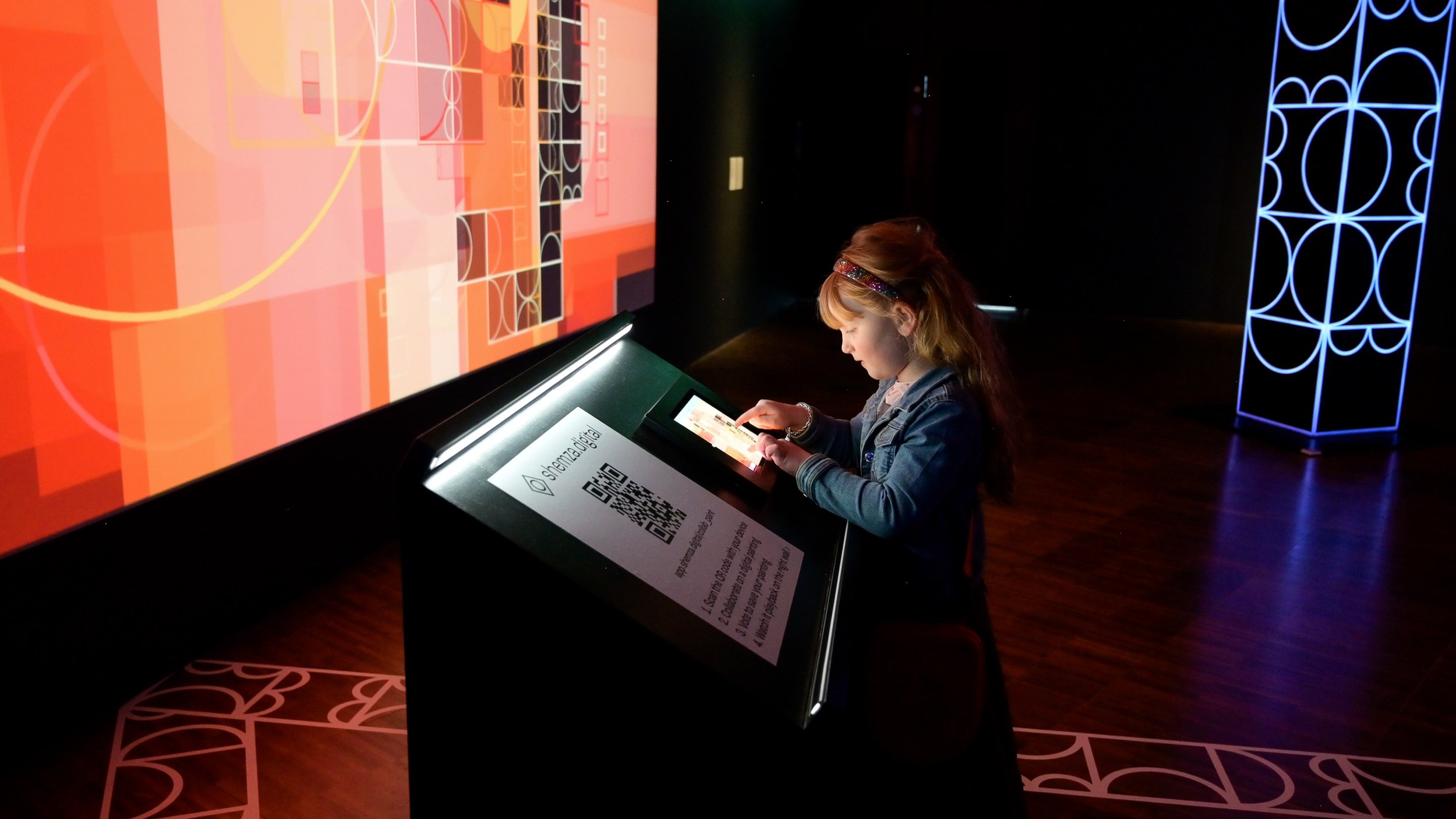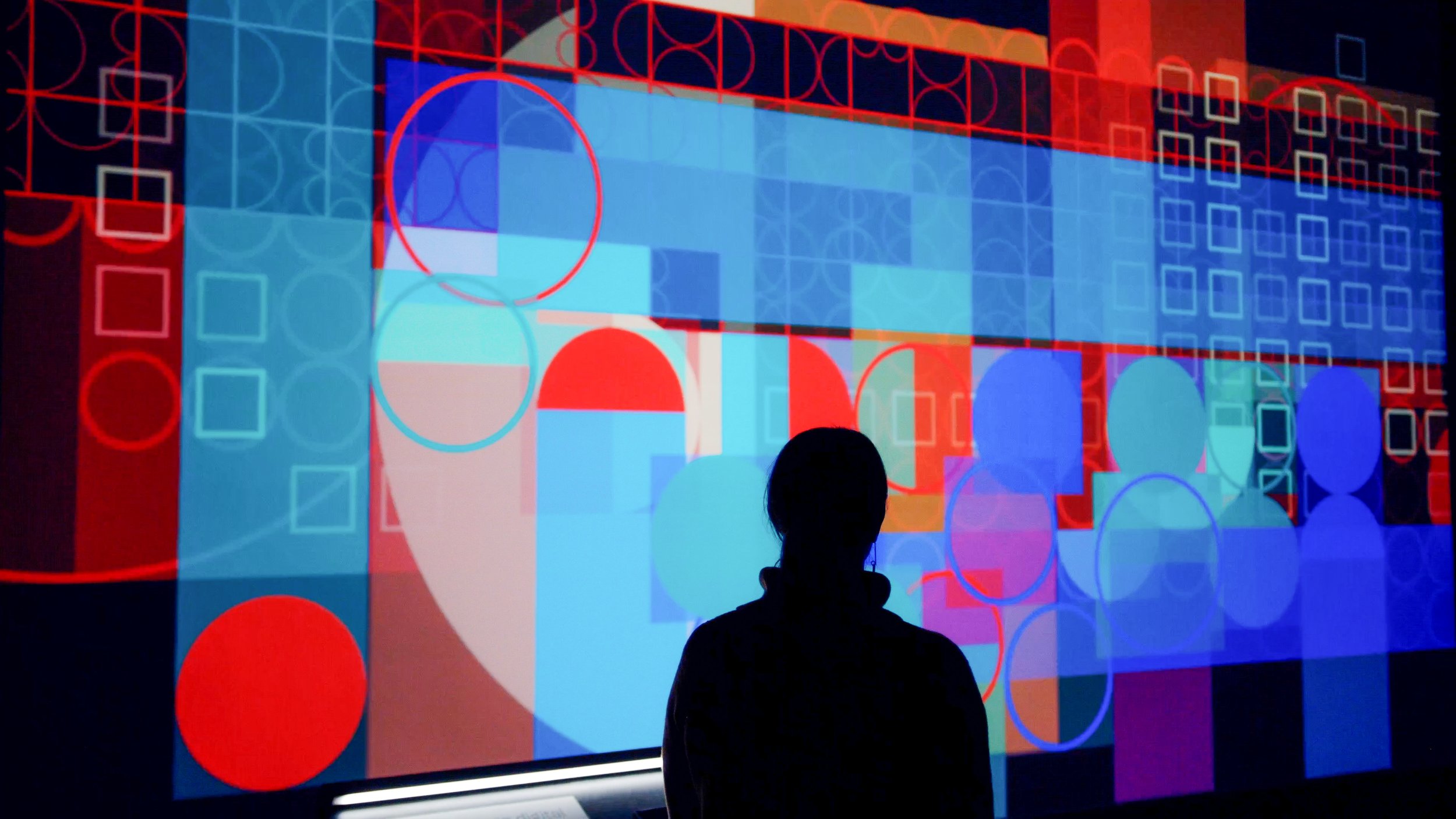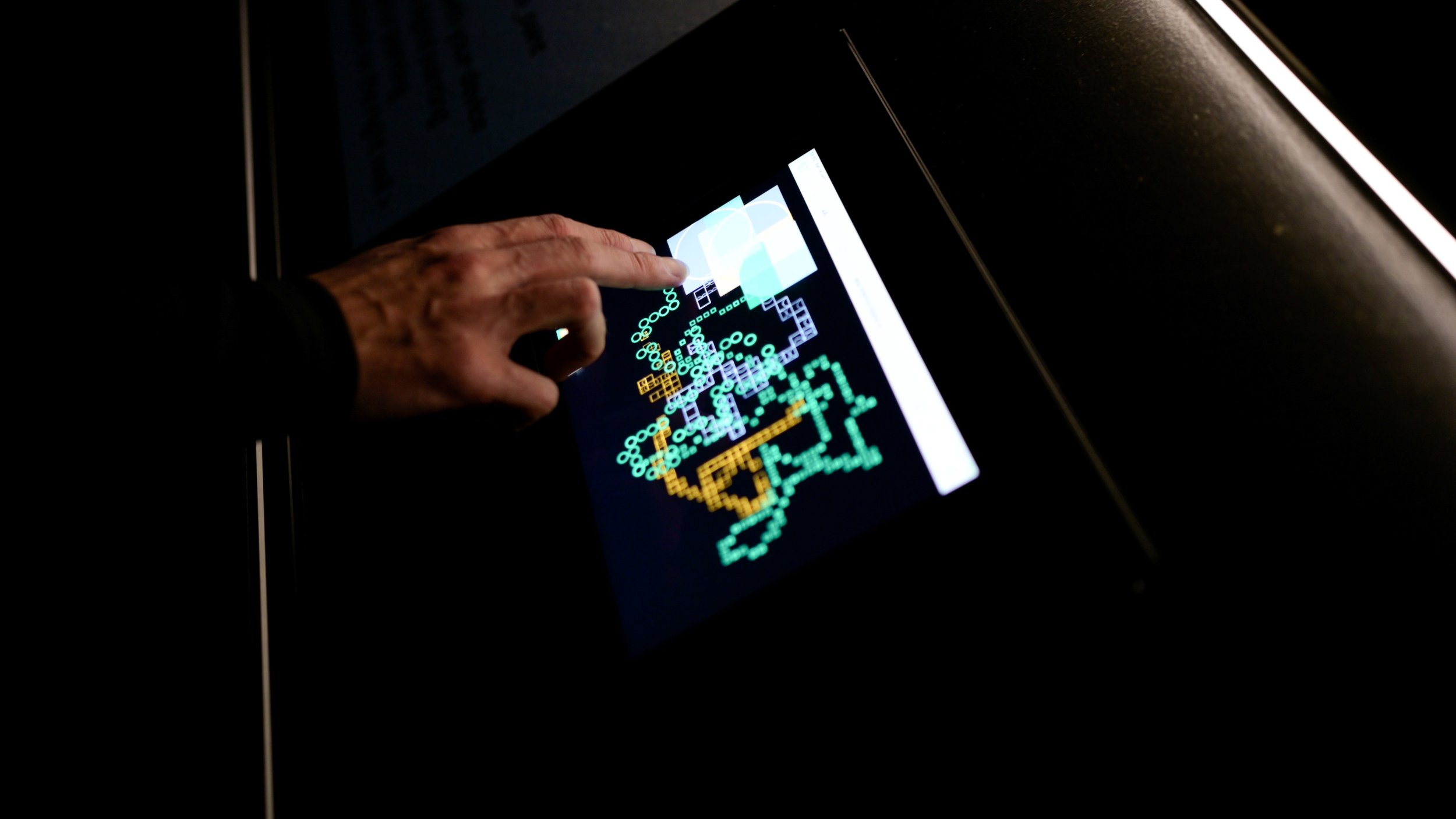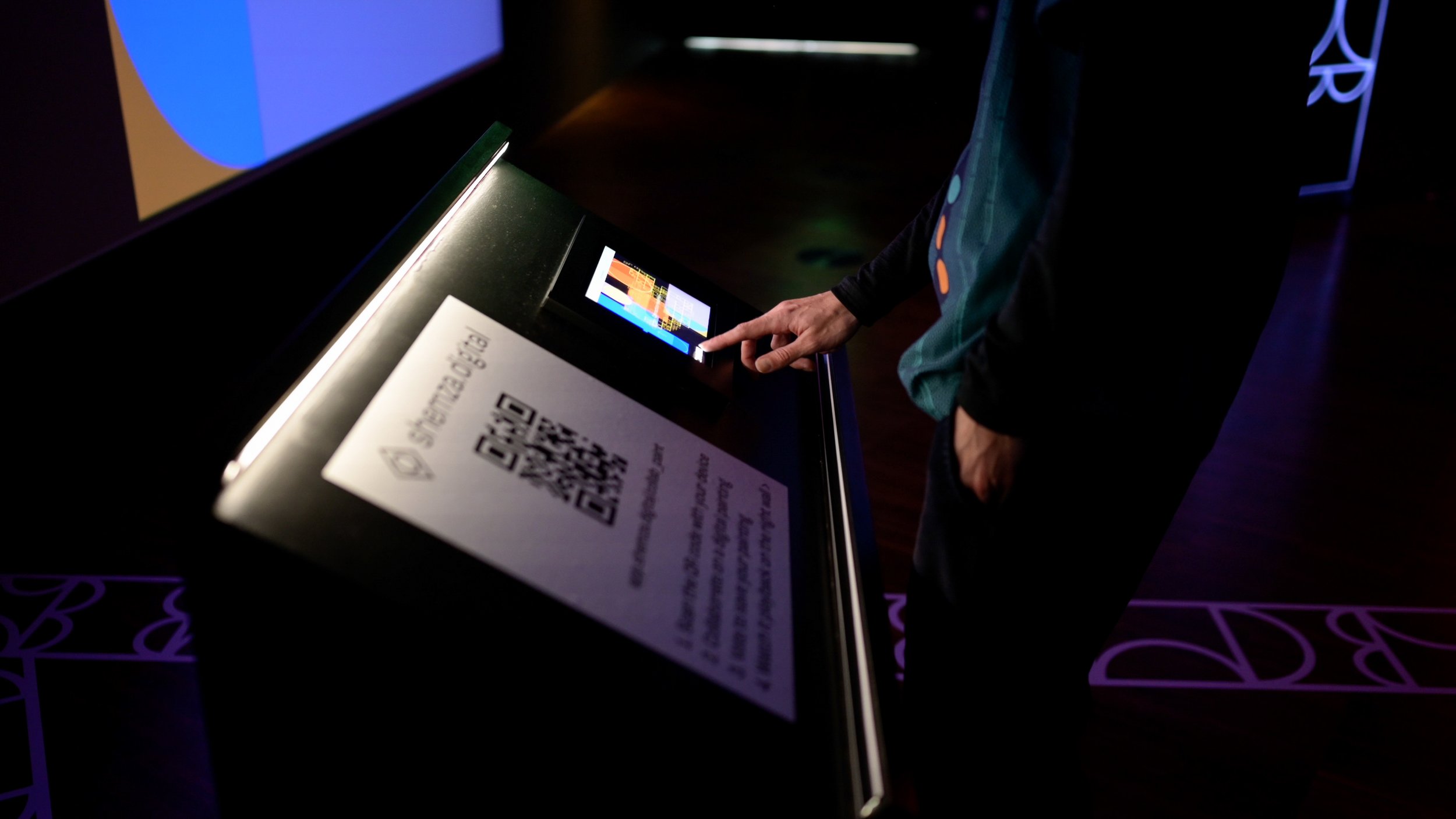Uncovering the hidden carbon costs of digital art practice
Introduction
As some of you may know I have a background in sustainable art practice and often use sustainable materials to create artworks about climate change. In this blog I will measure the carbon footprint of my new shemza.digital artworks and the costs of running them for the duration of the Shemza Digital: Across Generations exhibition held at Wolverhampton Art Gallery from Jan-April 2023.
I will share how I have worked out their impact and include some tips for how to reduce or mitigate these costs in the future. It is my aim through this article to uncover the hidden costs of digital art practice and interrogate a best practice for digital work moving forwards.
The new digital artworks
For the exhibition my team and I created 3 new digital and interactive artworks, details of which you will see below:
The Networked Condition
As part of my research for this project I found a really helpful tool called The Networked Condition (https://thenetworkedcondition.com/). The Networked Condition is an on-going exploration of the often-hidden environmental impact of the creation and delivery of artworks using digital technology. This research-led project is a collaboration between Fast Familiar, Abandon Normal Devices and Arts Catalyst, and part of Julie’s Bicycle Accelerator Programme. This tool is designed to help anyone who is interested in their carbon footprint and is planning or evaluating a live streamed event, digital artwork or digital event. The estimates it produces are based on the best data they could find from peer-reviewed academic papers and attributed sources.*
*Text cited from the Networked Condition website.
I used The Networked Condition to calculate the carbon footprint of the digital works that Peter Todd and I created for the exhibition as above. As the works, ‘shemza.digital #4, #7 & #8’ were all developed at the same time as one another, I have included them in one calculation for use in the Networked Condition. The Networked Condition splits its results into artwork development, the costs to create your project and artwork delivery, the costs to exhibit and run your artwork at your exhibition.
Digital artwork development
The artworks were developed by Peter Todd and I remotely. It took approximately fifteen full days to create the artworks and we had on average ten online meetings lasting approximately one hour each to discuss the work and feedback to one another. Peter and I use laptops in our work rather than desktops and didn’t travel to meet each other.
Image: Aphra Shemza & Peter Todd
Image: Visitors interact with shemza.digital #4
Results
The development of the three artworks generated 14.08kg carbon, approximately 4.69kg each.
Equivalent to
washing 28.73 times machine loads
driving 193.14 miles in a new diesel car (like driving from London to Bristol)
The results for the development of the artworks were higher than expected considering that we hadn’t travelled to meet one another and there were only two of us working on the project. However, both Peter and I have green energy suppliers at our places of work so this completely mitigates the carbon costs of our artwork development.
Helpful tips for artwork development reduction:
If possible opt for a green energy supplier for your home or studio environment. Green energy suppliers are below.
Green Energy UK - https://www.greenenergyuk.com/
Octopus Energy - https://octopus.energy/
Ecotricity - https://www.ecotricity.co.uk/
Good Energy - https://www.goodenergy.co.uk/
Where possible schedule only online meetings with your co-workers to mitigate travel costs.
Where possible try and keep the time of your online meetings to a minimum.
Only work with the number of people necessary to create the project and keep teams small to avoid unnecessary administration and carbon costs.
Image: Visitor with interacting with shemza.digital #4
Image: Visitor with interacting with shemza.digital #8
Digital Artwork Delivery
The artworks we created were exhibited at Wolverhampton Art Gallery for 91 days in total. Mon-Sunday 10.30-4.30pm - 6 hrs per day - 546 hrs total
The following hardware was used to display the three works:
3 x refurbished HP mini PCs
1 x NEC projector (gallery already owned)
1 x BENQ projector (gallery already owned)
1 x BENQ projector (bought new)
1 x online server
HDMI, ethernet and power cables
Results
The delivery of the three artworks generated 237.51kg carbon approx 79.17kg each.
Equivalent to
washing 484.71 times machine loads
driving 3258.02 miles in a new diesel car (Like driving from London to Sicily and back again)
Image: Visitor interacts with shemza.digital #4
Image: Visitor interacts with shemza.digital #4
I am absolutely shocked by the results that came back about the carbon costs of exhibiting these works in our exhibition. We are producing just under a quarter of a tonne of carbon for just one exhibition and since Wolverhampton Art Gallery do not have a green energy supplier these costs cannot be mitigated as in our artwork development results above. I think more awareness is needed to highlight the costs of digital artworks on our carbon footprint. Just because something appears invisible doesn’t mean that its impact isn’t felt.
Although we could not reduce the energy our artworks consumed we did consider the technology that we used for displaying our artworks, choosing refurbished and reused materials over buying new where possible. We used refurbished HP mini PCs with a built in start up program so they turned on and launched the program for the works automatically and the majority of the projectors we used were from the gallery stock. The one projector that we did buy was not a higher spec than the others as we decided to match the stock that the gallery already had, which reduced energy consumption also.
Helpful tips for artwork delivery reduction:
If possible, use a green energy supplier at the venue where your artwork is being displayed.
Where possible use reclaimed, refurbished, reused or recycled technology to exhibit your pieces.
Where possible hire or borrow equipment rather than buying it new.
Check the specs of the equipment you need to use and do not overspec it - there is no need to use a massive energy-consuming brand new projector when another lower specced piece of equipment will absolutely do the job you need.
If you are using a server - host it on a green server supplier:
GreenGeeks – best overall green hosting provider
A2 Hosting – best value for money
InMotion – best for flying the flag for change; first-ever green data centre
iPage – best for cheap plans – but at the expense of speed
DreamHost – best for extra features
https://www.websiteplanet.com/blog/best-green-web-hosting-services/
Conclusion
From measuring the impact of my digital artworks I have been shocked to discover the carbon costs of creating and exhibiting digital artworks. It is not my aim to stop using technology as I believe it gives us a great opportunity to create fully accessible and participatory exhibitions. I will, however, certainly be more mindful of their impact and how to mitigate their effects in the future. I hope through sharing my processes and discovery I have shed a light on the invisible costs of working with digital and through the helpful tips I have shared in this article I can encourage others to do the same.
Image: Visitors interact with shemza.digital #4
Image: Visitor interacts with shemza.digital #4





